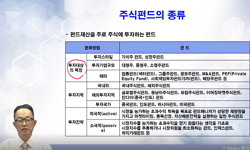The Korean Trust Act amended in 2011 has expressly confirmed that a business division can be transferred as a whole on trust to its trustee. The Act also introduced a new category of a limited liability trust that can be differentiated from orthodox t...
http://chineseinput.net/에서 pinyin(병음)방식으로 중국어를 변환할 수 있습니다.
변환된 중국어를 복사하여 사용하시면 됩니다.
- 中文 을 입력하시려면 zhongwen을 입력하시고 space를누르시면됩니다.
- 北京 을 입력하시려면 beijing을 입력하시고 space를 누르시면 됩니다.

신탁법제와 유동화법제 관련 최근 쟁점 기업분할과 자본조달 수단으로서의 사업신탁의 설립과 상장 -싱가폴과 홍콩의 경험을 중심으로- = The Formation and Listing of a Business Trust as Means of Spining off and Raising New Capital
한글로보기https://www.riss.kr/link?id=A100038380
- 저자
- 발행기관
- 학술지명
- 권호사항
-
발행연도
2014
-
작성언어
-
-
주제어
유한책임신탁 ; 사업신탁 ; 싱가폴 사업신탁 ; 투자신탁 ; 수탁자-운용자 ; 상장 ; 사업신탁의 상장 ; 분배의 융통성 ; 수익자의 유한책임 ; 지배구조 ; 분할 ; 기업재편 ; 구조조정 ; business trust ; limited liability trust ; Singapore business trust ; unit trust ; trustee-manager ; listing of a business trust ; flixibility in distribution ; benefi
-
KDC
300
-
등재정보
KCI등재
-
자료형태
학술저널
-
수록면
75-110(36쪽)
- DOI식별코드
- 제공처
- 소장기관
-
0
상세조회 -
0
다운로드
부가정보
다국어 초록 (Multilingual Abstract)
The Korean Trust Act amended in 2011 has expressly confirmed that a business division can be transferred as a whole on trust to its trustee. The Act also introduced a new category of a limited liability trust that can be differentiated from orthodox trusts in two points: Firstly, it can register on its own name rather than its trustee’s, and secondly it can make the trustee’s liability limited to the extent of the amount of the trust property. The combined effect of the two parts seems to make possible to form an American or Singapore style business trust. This articles explores the potential for the Korean business trust regime to develop. In doing so the article makes more focus on the structure and characteristics of the Singapore business trust which is gaining increasing popularity in recent years. The trust scheme provides both sponsoring entities and investors respective incentives to participate in the arrangement. From the sponsoring entities’ perspective, it provides them a form of financing of their high value assets and at the same time is able to generate a stable income for the sponsoring entity through control of the trustee-manager company. Secondly, the sponsoring entity may continue to control the sold property through the trustee-manager, and prevent the manager from being removed if it retains 25 per cent plus one of the units. From the investors’ perspective, the Singapore business trust provides them with the opportunity to invest in high value assets such as ships and infrastructure projects. It also allows the trust to pay returns to the unit holders from its cash profits rather than accounting profits that a company is supposed to find to pay dividends. However, the difficulty in changing the trustee-manager, and high performance fees paid to the trustee-manager may act as a disincentive for investors.
동일학술지(권/호) 다른 논문
-
신탁법제와 유동화법제 관련 최근 쟁점 지적재산권신탁의 한계와 활성화 방안 -일본신탁업법상의 제도와 비교를 통하여-
- 건국대학교 법학연구소
- 권종호 ( Jong Ho Kwon )
- 2014
- KCI등재
-
신탁법제와 유동화법제 관련 최근 쟁점 방송저작권 유동화의 활성화에 관한 소고
- 건국대학교 법학연구소
- 권재열 ( Jae Yeol Kwon )
- 2014
- KCI등재
-
- 건국대학교 법학연구소
- 김기태 ( Ki Tae Kim )
- 2014
- KCI등재
-
- 건국대학교 법학연구소
- 김상식 ( Sang Sik Kim )
- 2014
- KCI등재




 KCI
KCI KISS
KISS







